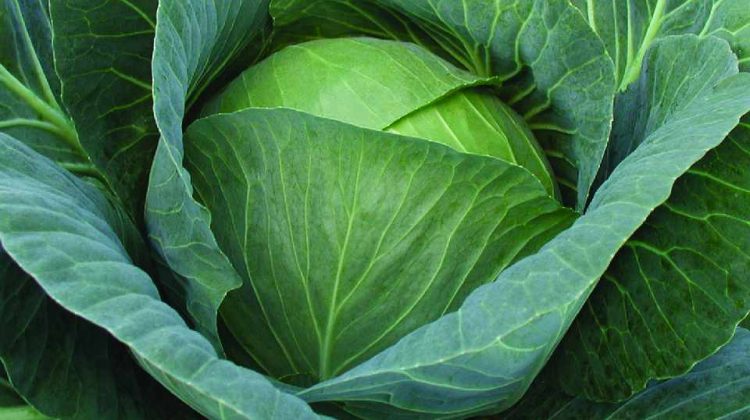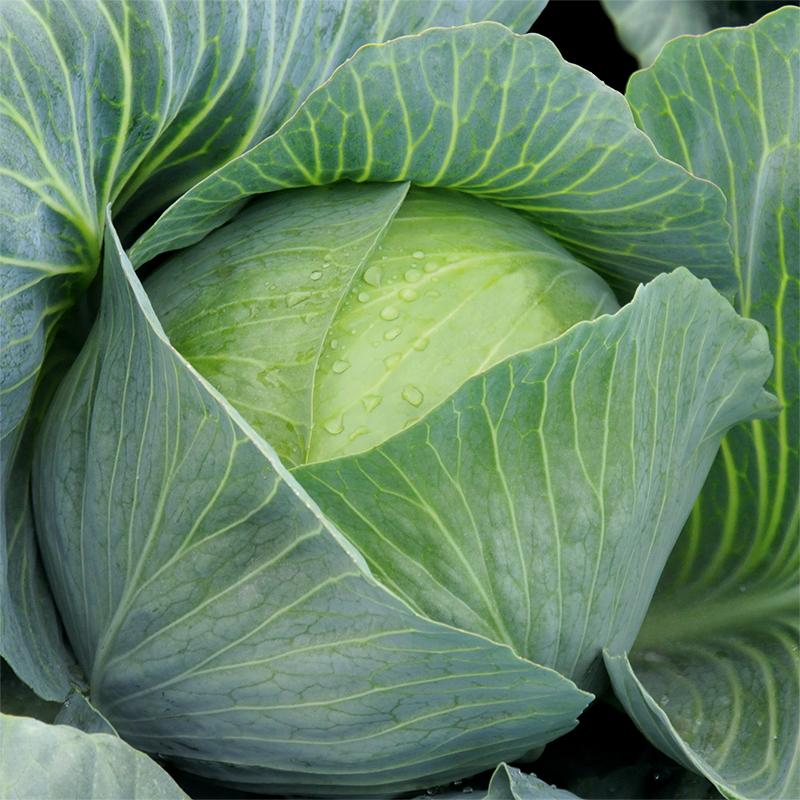
Cabbage, a cruciferous vegetable known for its versatility and crisp texture, offers a plethora of health benefits that make it a dietary staple for many. Packed with essential nutrients, vitamins, and minerals, cabbage is a nutritional powerhouse that contributes to overall well-being.
This unassuming vegetable is a rich source of vitamins C and K, both of which play vital roles in supporting the immune system and promoting healthy bones.
Cabbage is also low in calories and high in fiber, making it an excellent choice for weight management and digestive health.
Furthermore, its potent antioxidants help combat inflammation and may reduce the risk of chronic diseases. In this article, we will explore the various reasons why cabbage is an excellent addition to your diet, and how it can enhance your health and nutrition.
Furthermore, its potent antioxidants help combat inflammation and may reduce the risk of chronic diseases. In this article, we will explore the various reasons why cabbage is an excellent addition to your diet, and how it can enhance your health and nutrition.
The Nutritional Profile of Cabbage
Cabbage’s exceptional health benefits start with its impressive nutritional profile. Here’s a breakdown of the key nutrients you can find in this unassuming vegetable:
1. Vitamins
- Vitamin C: Cabbage is rich in vitamin C, a powerful antioxidant that supports the immune system, aids in collagen production, and promotes healthy skin.
- Vitamin K: This vitamin is essential for blood clotting and bone health. A single cup of cooked cabbage provides over 85% of the recommended daily intake of vitamin K.
- Vitamin B6: Important for brain development and function, this vitamin is found in cabbage in moderate amounts.
2. Minerals
- Manganese: Cabbage is an excellent source of manganese, a mineral that plays a role in bone formation, blood clotting, and reducing inflammation.
- Potassium: This mineral helps regulate blood pressure and maintains proper muscle and nerve function.
3. Fiber
- Cabbage is a good source of dietary fiber, which supports digestion, helps maintain healthy cholesterol levels, and promotes a feeling of fullness, aiding in weight management.
4. Antioxidants
- Cabbage contains a variety of antioxidants, including flavonoids and polyphenols, which combat oxidative stress and reduce the risk of chronic diseases.

Health Benefits of Cabbage
Now that we understand cabbage’s nutritional value, let’s explore the health benefits associated with its consumption.
1. Weight Management
- Cabbage is low in calories and high in fiber, making it an excellent addition to a weight management plan. The fiber in cabbage promotes satiety, helping you feel full and satisfied.
2. Heart Health
- The potassium in cabbage helps regulate blood pressure and reduce the risk of heart disease.
- The antioxidants and fiber in cabbage also contribute to a healthier cardiovascular system by reducing inflammation and LDL cholesterol levels.
3. Digestive Health
- The fiber in cabbage aids digestion by preventing constipation and supporting a healthy gut.
- Cabbage also contains a compound called sulforaphane, which may help protect the stomach lining from damage and reduce the risk of peptic ulcers.
4. Cancer Prevention
- Cabbage is part of the cruciferous vegetable family, known for its cancer-fighting properties. It contains compounds that may help reduce the risk of certain cancers, including colon, breast, and lung cancer.
5. Bone Health
- Vitamin K and manganese in cabbage are essential for bone health. They promote bone density and reduce the risk of fractures and osteoporosis.
6. Immune Support
- Vitamin C in cabbage supports the immune system by helping the body fight off infections and heal wounds.

Types of Cabbage
Cabbage comes in various types, each with its unique characteristics and flavors. Here are some of the most common varieties:
1. Green Cabbage
This is the most widely recognized type, with smooth, pale green leaves. It’s perfect for coleslaw, stir-fries, and stuffed cabbage rolls.
2. Red Cabbage
- Red cabbage, also known as purple cabbage, has vibrant, reddish-purple leaves. It’s often used in salads and adds a pop of color to dishes.
3. Savoy Cabbage
- Savoy cabbage has crinkled, dark green leaves and a slightly more delicate texture. It’s excellent for cabbage rolls and soups.
4. Napa Cabbage
- Napa cabbage, also known as Chinese cabbage, has a milder flavor and is often used in Asian dishes like kimchi and stir-fries.
5. Bok Choy
- Bok choy is another type of Chinese cabbage with tender, white stems and dark green leaves. It’s commonly used in Asian cuisine.
Read also: How To Make Nigerian Salad | Step By Step Guide
Delicious Ways to Incorporate Cabbage into Your Diet
Cabbage’s versatility makes it a fantastic addition to a wide range of dishes. Here are some delicious ways to include more cabbage in your diet:
1. Coleslaw:
- A classic side dish, coleslaw combines shredded cabbage with a creamy dressing. It’s perfect for picnics, barbecues, and as a topping for sandwiches.
2. Stir-Fries:
- Cabbage adds a crunchy texture to stir-fries and pairs well with other vegetables and protein sources like tofu, chicken, or shrimp.
3. Soups and Stews:
- Cabbage’s robust flavor makes it an excellent addition to soups and stews. It can be added to hearty recipes like cabbage soup or borscht.
4. Stuffed Cabbage Rolls:
- Cabbage leaves can be filled with a mixture of ground meat and rice, then simmered in a savory tomato sauce for a comforting meal.
5. Fermented Foods:
- Fermented cabbage dishes like sauerkraut and kimchi are not only tasty but also great for gut health.
6. Cabbage Wraps:
- Use cabbage leaves as a low-carb alternative to tortillas or bread for making wraps or tacos.
Growing Your Own Cabbage
If you’re interested in gardening and want to enjoy the freshest, homegrown cabbage, consider growing your own. Here’s a basic guide to get you started:
1. Choose the Right Variety: Select the type of cabbage you want to grow, keeping in mind factors like climate and available space.
2. Planting: Cabbage is typically grown from seeds or seedlings. Plant them in well-drained soil with plenty of sunlight.
3. Maintenance: Keep your cabbage plants well-watered and free from pests. You can use natural remedies like neem oil or companion planting to deter insects.
4. Harvesting: Cabbage is ready to harvest when the heads are firm and feel solid when squeezed. Use a sharp knife to cut the cabbage from the stalk.
Precautions and Considerations
While cabbage is undoubtedly nutritious and beneficial for most people, it’s important to consider a few precautions:
1. Gas and Digestive Issues: Cabbage contains certain fibers that can produce gas, which may cause bloating or digestive discomfort in some individuals. If this is a concern, start with smaller portions.
2. Thyroid Function: Some studies suggest that excessive consumption of raw cabbage may interfere with thyroid function. If you have a thyroid condition, consult your healthcare provider for guidance.
3. Allergies: Cabbage allergies are rare but can occur. If you experience symptoms like hives, itching, or difficulty breathing after consuming cabbage, seek medical attention.
Frequently asked questions (FAQ)
Cabbage is low in calories and high in essential nutrients, making it a nutritious addition to your diet.
Cabbage is rich in vitamins C and K, as well as a good source of vitamin B6, folate, and minerals like potassium and manganese.
Vitamin C in cabbage is known for its immune-boosting properties, helping the body defend against infections.
Yes, cabbage is low in calories and high in fiber, making it a great choice for weight control by promoting satiety and reducing calorie intake.
The fiber in cabbage aids digestion and supports a healthy gut by preventing constipation and promoting regular bowel movements.
Excessive consumption of cabbage may lead to flatulence or digestive discomfort in some individuals. Moderation is key.
You can enjoy cabbage raw in salads, sautéed in stir-fries, or stuffed in cabbage rolls. Experiment with coleslaw, kimchi, or even cabbage soup.
Certainly! Here are a few recipes: Cabbage Stir-Fry, Cabbage and Carrot Slaw, Stuffed Cabbage Rolls, and Roasted Cabbage Wedges.
How to cut cabbage
To cut cabbage, first remove the outer leaves, cut it in half, and then slice or chop as needed. For coleslaw, thinly shred it; for stir-fries, chop into strips or chunks.
How to shred cabbage
To shred cabbage, start by removing the outer leaves. Cut the cabbage in half and then cut the core from each half. Lay one half flat on a cutting board, and thinly slice it crosswise to create long, thin strips.
You can use a knife for this or a mandoline slicer for even thinner cuts. Repeat with the other half of the cabbage. Shredded cabbage is perfect for coleslaw, salads, or stir-fries.
How long does cabbage last in the fridge
Cabbage can last in the fridge for a relatively long time. When properly stored in a perforated plastic bag or airtight container in the crisper drawer, it can stay fresh for up to 2 months.
However, the outer leaves may deteriorate sooner, so it’s advisable to remove and discard any wilted or damaged layers to extend its freshness.
Conclusion
Cabbage, often overlooked in favor of more glamorous vegetables, is a nutritional powerhouse that offers an array of health benefits. From its abundance of vitamins and minerals to its potential role in cancer prevention, cabbage is a valuable addition to your diet.
Whether you enjoy it in coleslaw, stir-fries, or as a fermented dish, incorporating cabbage into your meals is a simple way to boost your overall health.
So, next time you visit the produce section of your local grocery store, don’t forget to grab a head of cabbage and explore its culinary and health potential.
